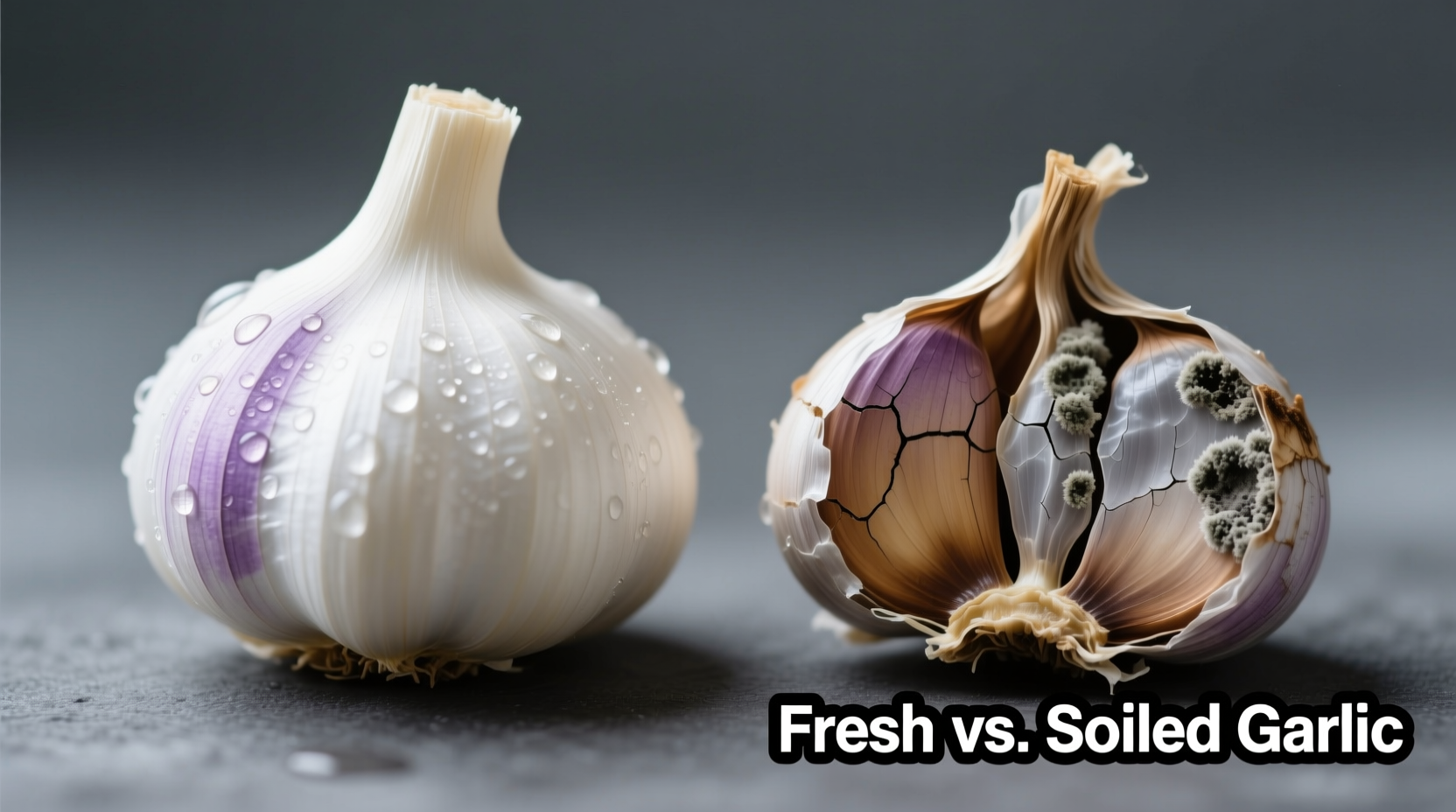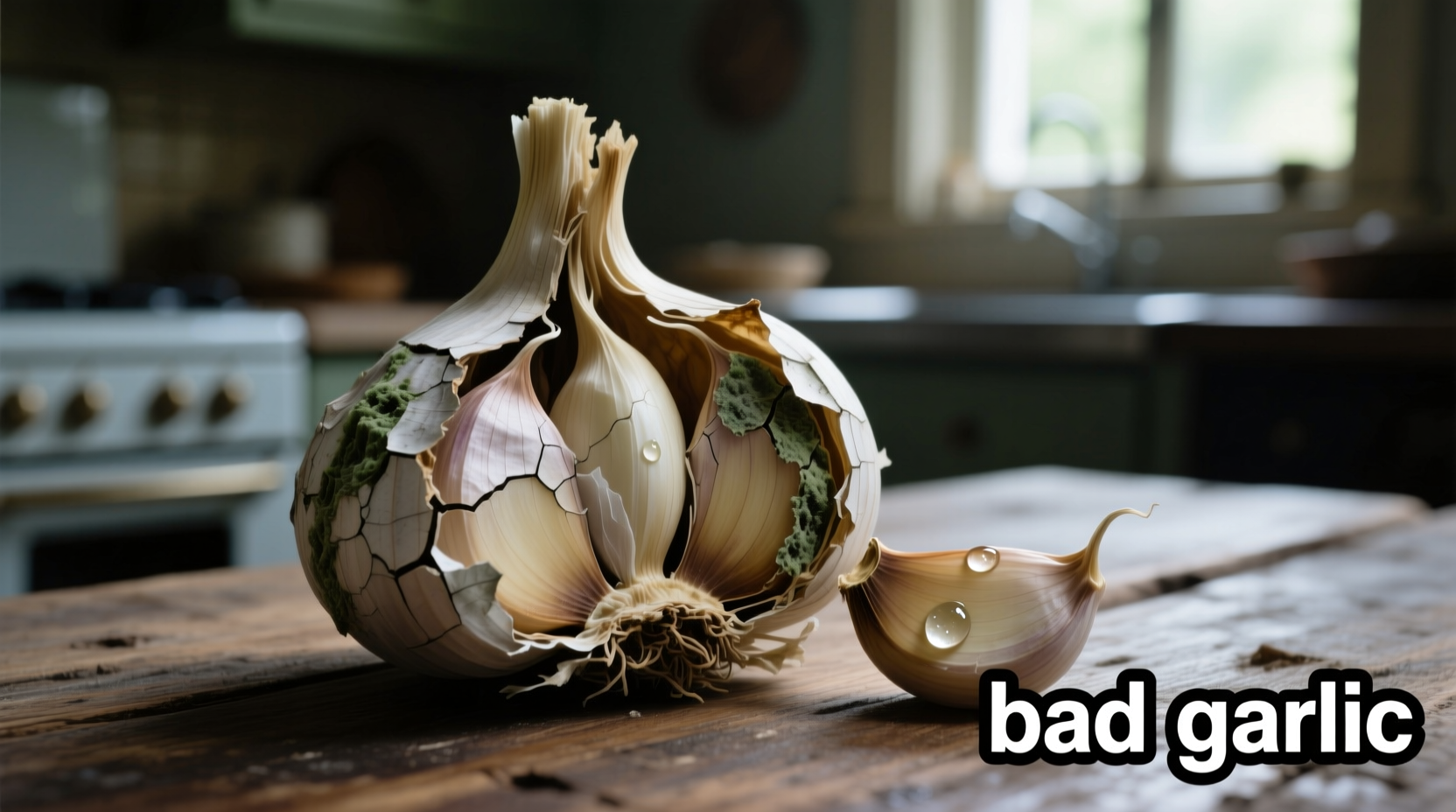Discover exactly how to identify spoiled garlic and protect your health with this comprehensive guide. You'll learn the subtle visual cues professionals use to spot bad garlic, understand the science behind garlic spoilage, and gain practical storage techniques that extend freshness by weeks. Whether you're a home cook or professional chef, these evidence-based methods will eliminate food waste while ensuring your dishes maintain optimal flavor and safety.
How to Identify Bad Garlic: The Visual Inspection Method
Garlic spoilage follows predictable patterns that become obvious once you know what to look for. The first signs appear externally before affecting the cloves inside. When examining garlic bulbs, focus on these critical indicators:
| Characteristic | Good Garlic | Bad Garlic |
|---|---|---|
| Texture | Firm, solid cloves with tight skin | Soft spots, mushy areas, or cloves that indent easily |
| Color | Uniform off-white cloves with papery beige skin | Brown or black spots, green sprouts longer than 1 inch |
| Smell | Clean, sharp aroma when crushed | Sour, unpleasant odor even before crushing |
| Mold | No visible mold | White, green, or black fuzzy growth on skin or cloves |
When Sprouted Garlic Is Still Safe (And When It's Not)
Many home cooks mistakenly discard garlic at the first sign of sprouting. According to USDA food safety guidelines, garlic with small green sprouts (less than 1 inch) remains perfectly safe to eat after removing the sprout. The sprout itself contains higher concentrations of allicin, garlic's active compound, but doesn't indicate spoilage.
However, when sprouts exceed 2 inches or the cloves become soft and discolored, the garlic has passed its prime. Food science research from the University of California's Agriculture and Natural Resources department shows that extended sprouting correlates with decreased flavor compounds and increased risk of microbial growth.

The Hidden Danger: Garlic in Oil and Botulism Risk
One often overlooked danger involves improperly stored garlic in oil. The FDA explicitly warns that garlic submerged in oil at room temperature creates ideal conditions for Clostridium botulinum growth, which causes botulism. This risk increases dramatically with already compromised garlic.
Professional chefs follow this safety protocol: always refrigerate garlic-infused oils and use within 4 days. For longer storage, freeze the oil mixture. Never store homemade garlic oil at room temperature, regardless of how fresh the garlic appeared initially.
Proper Garlic Storage Techniques That Actually Work
Extending garlic's shelf life requires understanding its biological needs. Garlic is a living bulb that continues metabolic processes after harvest. Optimal storage conditions slow these processes without causing damage:
- Airflow is critical - Store in mesh bags or open baskets, never sealed plastic
- Temperature matters - 60-65°F (15-18°C) is ideal; avoid refrigerator humidity
- Darkness preserves quality - Light triggers premature sprouting
- Separate from other produce - Garlic emits gases that accelerate spoilage of nearby fruits
For those in humid climates, placing garlic bulbs in a paper bag with a silica gel packet significantly extends freshness. This method, recommended by food preservation experts at the National Center for Home Food Preservation, reduces moisture-related spoilage by maintaining optimal humidity levels around 60-70%.
What to Do With Questionable Garlic
When garlic shows early signs of deterioration but hasn't reached clear spoilage, professional chefs employ these strategies:
- Immediate use - Incorporate into cooked dishes within 24 hours
- Peel and freeze - Individual cloves freeze well for future cooking
- Make garlic powder - Dehydrate slightly soft cloves for homemade seasoning
- Create infused oil (safely) - Use immediately in cooking, never for storage
Remember that cooking does not eliminate all risks from significantly spoiled garlic. When in doubt, throw it out—garlic is inexpensive compared to potential foodborne illness.
Common Misconceptions About Garlic Spoilage
Several persistent myths lead to unnecessary food waste or, worse, consumption of unsafe garlic:
- "Brown spots mean it's moldy inside" - Surface blemishes often don't penetrate cloves
- "Refrigeration always extends freshness" - High humidity causes premature sprouting
- "Garlic never spoils" - All garlic eventually deteriorates, especially in warm conditions
- "Vinegar preserves garlic indefinitely" - Improperly canned garlic vinegar carries botulism risk
Understanding these distinctions helps reduce food waste while maintaining safety standards. The University of Minnesota Extension confirms that properly stored garlic typically remains fresh for 3-5 months, with hardneck varieties generally lasting longer than softneck types.











 浙公网安备
33010002000092号
浙公网安备
33010002000092号 浙B2-20120091-4
浙B2-20120091-4